Sapien Loop and Our Own World – Part Three: Family and Society
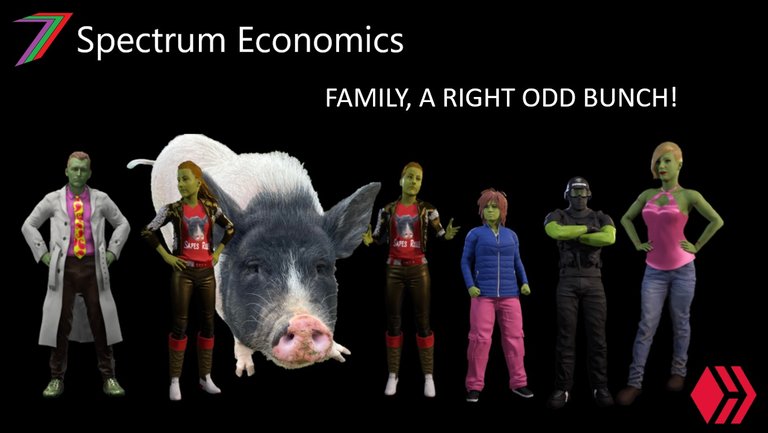
In Part One, I covered the broad overarching theme of civilisation and social cycles in the Sapien Loop story. In Part Two, I covered the economy and power structures of Sapey and how it resembles our own world.
In Part Three, I am delving into the structure of Sapey’s society, and how it reflects our own. I discuss the nature of family structure, communities, religion, education, relationships between communities, relationships with the environment, and relationships between different species. All of the above are interconnected and need to be discussed in relation to each other. For this post, I am mostly focusing on family because I believe it is at the centre of society.
Sapey society in ‘End of an Era’ is intended to vaguely depict a potential future society if our world continues along its current trajectory.
Family Is at the Heart of Society
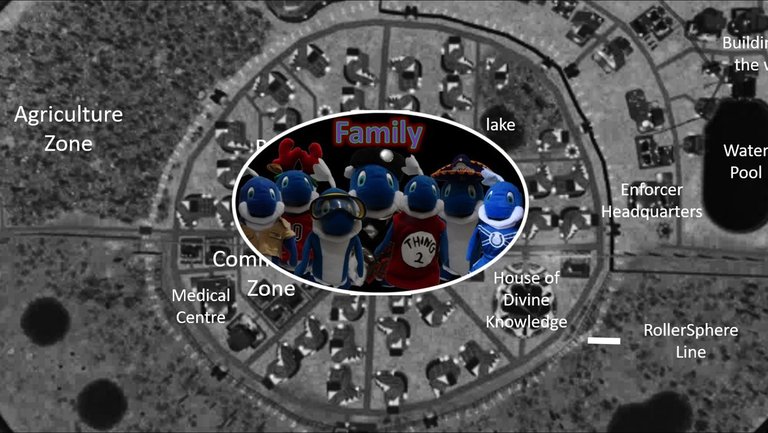
I would argue that the family is the foundation of a well-functioning society. It shapes individuals and builds communities. The family provides individuals with security, care, emotional support, and basic social interactions. The family educates and passes on its established values to future generations. Communities became an extension of the family. Many families would work together to mutually benefit each other. This created strong ties and shared values and culture.
From the perspective of leaders, the most important aspect of the family was influence. A few senior family members could influence an entire community. However, there were many different communities. All these communities could evolve in different ways. This is problematic for leaders, who desire a more unified society, which would be much easier to control.
A method of aligning the values and cultures of these communities is the implementation of an overarching ideology. Religion could offer that ideology if it could become widely accepted. Paganism did not reliably provide guidance that could be easily and consistently taught or practised. However, Christianity could be far more easily structured. There were hundreds of Christian texts. The scriptures that conveyed consistent ideology were compiled to form the Bible. In the fourth century, the Roman Empire adopted Christianity as its State religion. This eventually led to greater unity across the empire.
The church became the source of the influence in communities. Leaders in communities would use their influence to reinforce its teaching and practices. They would ensure that the next generation would continue to follow its ideology. To grow the influence of the church and therefore the reach of the ideology, the church encouraged the growth of the family as well as encouraged conversions.
Over the centuries, Christianity has changed, and so has its influence. Christianity has become considerably less centralised. This is largely because of the Protestant Reformation. Prior to the 16th century, Catholicism was the dominant form of Christianity. However, because of its strict structure and perceived corruption, it came under attack from several key figures in the church. They believed the Bible to be the sole source of revelation. This led to the creation of many different Protestant denominations. All of them had slightly different interpretations of the Bible.
This division of the Christian faith contributed to its influence on shaping liberal Western values and culture, which have become imbedded in Western society. This contributed to the rise of democracy and the rise in economic freedom and competitiveness. This is discussed in Part Two.
The rise of liberal Western values, combined with diverse teaching and interpretation of the Bible, weakened Christianity as a tool to control the masses. Christianity needed to be challenged by another ideology that could more successfully unify the masses. One such ideology was Communism.
Communism, most notably Marxism, attacked both the church and family, claiming them to be instruments of oppression. Ironically, the Protestant Reformation had already reduced the extent of the church’s power. However, it gave rise to liberal values that supported individualism, which contributed to the rise of capitalism.
In theory, Marxist ideology aligned with liberal Western values such as compassion, social justice, and equality. As mentioned in Part Two, it has inspired several movements that have progressed democratic causes. However, in practice, Marxist Communism does not closely align with liberal Western values. It is imposed in an authoritative manner. Examples include China, the former USSR, Cuba, and North Korea. The State (i.e., the Government) controls everything. Some countries might hold elections, but they do not allow parties or candidates who oppose Communism any chance of winning. People in Communist countries have limited freedom. Freedom of speech and movement is limited. Anything that the Government considers a threat to their ideology is restricted. Hence, the application is in contradiction to its theory.
For leaders supporting Marxist ideology, the most important aspect of the family was its influence over their communities and future generations. Instead of seeing this influence as positive and a way of promoting its ideology, it saw it as a hindrance and even a threat. The difference in approach mostly relates to how they came about. The rise of Christianity was predominantly evolutionary. The spread was gradual. The family played an important role in that. The rise of Communism was revolutionary. It was sudden and often forced. The dynamics of the family are not conducive to abrupt change. Therefore, Communist leaders desired to break up the family and let the State take over its fundamental roles, such as raising children. By doing this, they could ensure that children would be brainwashed with the ideology of the State.
Communist and socialist ideologies spread rapidly across the world, but they did not establish a permanent grip. This was particularly true in countries with liberal Western values. Their greater impact was on the one-dimensional political spectrum we have to this day.
The left-right paradigm began with the French Revolution. Those who favoured the monarchy were on the right, and those that opposed the monarchy were on the left. Arguably, liberal Western values would align better with those on the left. However, the left was captured by socialist ideology that appeared on the surface to align with liberal Western values. The right leaned more towards capitalism and became more economically liberal than the left.
By itself, the one-dimensional left-right political spectrum has little meaning. The political parties and the activists that claim to support the left, as well as the ones that claim to support the right ideology, continuously redefine their ideology to suit their current agendas. As explained in Part Two, the left-right political spectrum serves to divide the people and keep them divided. The division revolves around the parties and the activists that claim to represent the ideologies rather than the fundamentals behind the ideology itself. The media plays a critical role in reinforcing the shifting ideology to fit the agenda of the day.
The family was under attack from both sides of the political spectrum. One such attack was feminism. The activists from the left would argue that the traditional family structure was oppressive to women. Men were far more heavily engaged in paid work, and women in unpaid work. Paid work was considered superior to unpaid work, and traditional male roles (e.g., leadership) were considered superior to traditional female roles (e.g., carer).
The feminist movement advocated for equal access to work and roles. In theory, this is a good idea. Promoting freedom and equal opportunity is a good thing. However, when the narrative is skewed in favour of paid work and male roles, women are pressured to pursue them. The outcome for women has not been great. They are engaged in both paid and unpaid work, and their overall happiness has not improved.
Activists from the right have opposed aspects to feminism, but they generally support the push for women to join the workforce. Increasing the potential size of the workforce is good for businesses, large ones in particular. This creates more competition for jobs. This can improve the quality of the workforce while forcing wages down. Eventually, families were forced to have two working adults to financially support the family.
The push towards women taking on traditional male roles has had an impact on the family. This is because the focus has been on women and not the family. The changing of roles of one family member needs to be compensated by the change in the roles of another family member (i.e., the men). This has not happened, thus creating disequilibrium in the family. This breakdown can be seen from high divorce rates, fewer marriages, lower birth rates and an increase in single-parent families. Instead of a failing, this could also be interpreted as an outcome of greater financial independence and lesser dependence on men, which makes marriage and the support of the family structure less necessary. However, the outcome is the same, which is the dissolving of the traditional family structure.
In the West, the support for women joining the workforce has been focused on paid employment rather than entrepreneurship. In many non-Western countries, particularly in East Asia, women have become economically active by running their own or the family business (see my post, The Subjugation of Femininity and the Mirage of Sex Equality (Part 2: Differences by Nature and by Opportunity)). The flexibility in working hours and proximity to home have been less detrimental to the family. However, Western establishments want the family to fail and do not want to encourage small business success (I have discussed in several posts the Establishment’s attack on small business and why; Oligopoly – The market structure that does not let the market decide is one such post)).
In modern society, there is a multitude of sources of influence. The most powerful are likely to be the media and social media. However, their purpose is to influence opinion rather than shape ideology. The information transmitted through media and particularly social media is considerably shallow compared to what is taught by religion or even political thinkers. This leaves a void in people’s lives. Consciously or even subconsciously, people will try to fill this void in some way. This could lead people back to religion, but not necessarily Christianity.
Social media has had a detrimental impact on both family and the community. People, young people and children in particular, turn to social media as their primary form of socialising. It is a poor substitute for in-person socialising. It lures people away from their families and communities to a fake online world full of anonymous people with unknown intentions.
In my post, The Family, I discuss in some length, with the support of data, the collapse of the family. The collapse has not occurred by accident. It has been intentional. The Establishment considers the family a threat to the system. It is a threat because of the influence family members have on each other. It is a threat because it builds social cohesion in communities. This social cohesion can be used against the Government if it overreaches.
The Establishment wants to take children away from their parents. They do so with childcare and longer school hours. They want to be the main influence on children. They do so through propaganda in schools and media. They reinforce this with social media using the algorithms that reinforce their propaganda.
Sapien Loop Society
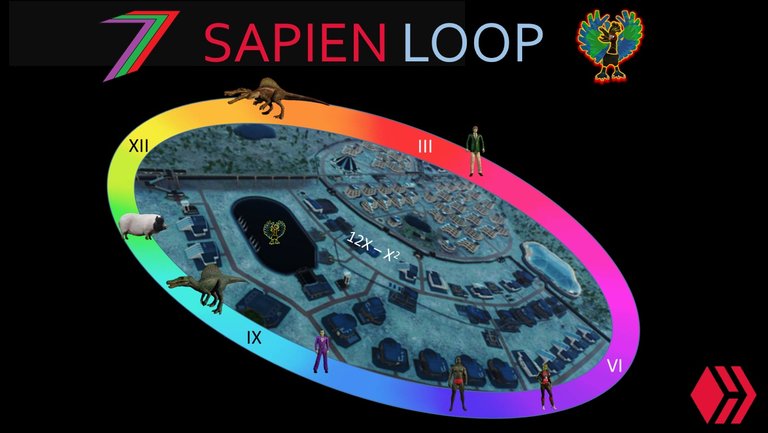
The structure of society in Sapien Loop is introduced very early in ‘End of an Era’. It is described in the prologue, and members of a selected family (Bramley family) are the first to be introduced in the first chapter of Part One of the book.
The prologue introduces the world of Sapia. It describes the systems put in place. It also hints at the breakdown of family. In the guise of facilitating employment, children are separated from their parents at a very young age. Then, when they mature, the young adults are separated more permanently from their parents. The limited capacity of the regions forces them to seek employment in other regions that have capacity and the employment they might be seeking.
Later in the book, the structure of Sapey is revisited when a character decides to expose it. She decodes how the system has divided society. She describes how the Linap maintain control through five steps. Three of those steps involve controlling and breaking down the family.
Step two was isolation. The regions kept the Sapiens isolated from each other. The reasoning for the limited capacity of the regions was the wastelands, which were a dangerous, uninhabitable area outside of the regions. Regions could not accommodate growing families because they could not be expanded safely. Instead, new regions had to be built. They were detoxified before they could be inhabited.
Step two is describing the possible future of smart cities if they are enforced as a method of protecting people from a climate disaster. Areas outside the smart cities could be considered dangerous or uninhabitable. Access to these areas will be restricted. In Sapey, Sapiens can only enter or leave regions by train.
Step four clearly outlined the removal of children from their families as a way to brainwash them. This aligns with childcare services and prolonged school hours.
Step five elaborates on the points made in step two. It explained that if Sapiens wanted to advance their careers, they had to be relocated to regions where their skills were needed. They were isolated to a point where their family would not even know if they were still alive. Later in the book, it is mentioned that the death of certain characters would not even be noticed because of the breakdown in contact between them and their families.
It is possible that the limited capacity of smart cities will be used by Governments to force the split of families when children seek employment or want to start their own families.
Another important part of the story was the Jeed Region. It was advertised and promoted as the fun region that would help troubled youth, but it turned out to be the exact opposite. It was designed to take children, teenagers and young adults away from their family. If a youth passed the course, they would be asked to stay to help run Jeed. If they failed, they would become fruit pickers in the surrounding Southern Agriculture Zone. Hardly any ever returned to their family.
Younger children were also kept there, but they were exploited by influential clients. This was done to fund the region as well as a tool to blackmail these clients. This aligns with what I discuss in Part Two about controlling corrupt politicians. The Jeed Region was also significant in the introduction and development of artificial intelligence; this will be discussed in Part Four.
In reality, children are exploited in many different ways. According to Love146, millions of children are trafficked every year, and the numbers are rising rapidly. Many are forced into labour and others sexually exploited. The events described in Jeed are a downscaled version of what is actually happening in the world.
Child abuse does not end with trafficking. Abuse is occurring very openly in Western countries in the form of induced sex dysphoria. Children are brainwashed to believe that they are in the wrong bodies. Young children that do not fit gender norms are targeted. For example, a girl who looks to play with toy trucks might be brainwashed into believing she is a boy trapped in a girl’s body. Once she starts thinking this, schools and ‘healthcare’ professionals then reaffirm it. This could lead her to be given drugs and even surgery to change the appearance of her body.
The media celebrates this induced condition. Thus, encouraging children and even adults to embrace this false transition like it is some kind of achievement. Anyone who questions this abuse is treated like the abuser. This creates anger and even hatred towards the delusional ‘transitioned’. Hence, stirring more division within society while attacking the family structure.
Sapien Loop does not delve into the intricacies of this type of attack on children. Instead, it more bluntly tells the story of a girl who was surgically force-transitioned by her father to resemble a boy and to psychologically take on the persona of a male.
Another attack on the family was the contamination of the water supply. It was done to cause infertility. Its main intention was to wipe out the Sapiens as a species, but before it did that, it would destroy what was left of Sapien families.
Infertility in the West is on the rise. The cause of infertility is a little more complicated than a poisoned water supply. However, poisoning is likely a main factor. This poisoning is in the form of drug and alcohol abuse as well as the consumption of highly processed foods. There is also the impact of the mRNA jabs.
At the beginning of ‘End of an Era’, the Bramley family is introduced. This is significant for many reasons. They are at the heart of all the events that occurred in Adoy. One of the sons is involved with a group that challenges the status quo of the region and society. Another son is aboard the train that crashed, and he becomes one of the first Sapiens to explore the wasteland. He is also the first Sapien character who is able to hide himself by becoming invisible. The father of the family discovered the dead Sapes that were killed by the Sentray.
The Bramley family was a tight-knit family that drew strength from each other. They supported each other whenever possible. On many occasions, they risked their lives for each other. Their strength as a family kept them alive when the world around them was collapsing. The collapse of the Sapey was inevitable, and, unfortunately, so was the fate of the family.
The Bramley story goes much deeper than the family of five from Adoy. In the story, they are referred to as the Bramley family. However, this reference is just for the benefit of the readers. The Bramley family, like all other Sapien families, did not have an official surname. Surnames were reserved for just elite Linap families. This was another method of disconnecting the Sapiens from their families and disconnecting them from extended family.
Bramley was used to identify the family as a group and, more importantly, a reference to their genes. The name Bramley came from an elite Linap family. As mentioned in ‘Frozen in Time’ and described in detail in the short story ‘The Bramley Gene’. One of the family members escaped the Capital City. The genes of her offspring became mixed with those of the Sapiens. This is how it is possible for some Sapiens to shapeshift. Despite the shapeshifting genes being removed from their DNA.
The theme of family breakdown is repeated throughout ‘End of an Era’. The main antagonist lost his mother and his wife. He destroyed his relationship with his eldest daughter and then appeared to lose both the twins. Another character loses both her mother and father. Another character had her dreams of even starting a family taken away from her.
In ‘Frozen in Time’, the attack on the family continued. The most significant attack occurred when the genetically modified children were manipulated to turn on the unmodified adults. This caused the breakdown of families, as the children considered themselves superior to the adults. This spread across society, causing social disorder. The divide had grown so great that when the sickness hit the second generation of the genetically modified, they refused to even consider a back breeding solution (modified Linap breeding with unmodified Linap). This ultimately led to the collapse of the ancient world.
‘Frozen in Time’ included several more attacks on the family. Twin sisters were turned against each other. In ancient Sapey, the Alset family were continuously under attack as others desired to strip them of their power. In the North District, families were torn apart by fatal accidents in the mining industry. A key difference in the attacks on the family in the second book is that there were signs of hope.
‘Frozen in Time’ also explored the power of naming. When someone has a name, he or she becomes memorable and therefore more meaningful. In the North District, as a way of dehumanising the orphans, they were not given names. It made it easier to treat them like objects. Decades later, the babies in the laboratory were not referred to by name, as they were meant to be no more than test subjects. However, the mothers of the babies named them and made sure the scientist was consistently reminded of their names. This caused him to become emotionally attached to them. One of the children became like family to him.
The survival of the Downs Region was a strong endorsement of the strength of family. The Downs Region was initially reserved for Sapiens diagnosed with Trisomy-21. This is described in the short story ‘Down But Not Out’. Later, Downs also became a home to other Sapiens with disabilities. Most of the residents of Downs were split from their biological families. Despite this, they formed their own tight-knit society, which became just like a family.
The Downs Region was also created in response to the effort of legalising prenatal termination (i.e., abortion in our world) of Sapiens who have been diagnosed with Trisomy-21. That is an additional chromosome on the twenty-first pair. It is more commonly known as Down Syndrome. Hence, why the region was named Downs in the book.
In our world, the rate of abortion for babies diagnosed with Down Syndrome is incredibly high. For countries such as Iceland and Denmark, almost 100% of babies that have been diagnosed with Down Syndrome are aborted. In France, it is around 77%, and in the USA, it is around 67% (CBS). Babies diagnosed with conditions such as Spina Bifida are also aborted more than 50% of the time, but data on exact numbers are not available.
As mentioned by a character in ‘Down But Not Out’, the reasons for prenatal termination of a baby can continue to expand once a precedent has been made. In the short story, it was the Trisomy-21 babies, but the intention was to expand its application to other detected abnormalities and eventually for any reason.
This is a good example of the power of brainwashing. The perception has been created that unborn babies, referred to using dehumanising language such as ‘foetus’, are little more than parasitic genetic material. It is much easier to dispose of something if you refuse to acknowledge it is even a living being.
People conveniently do not want to acknowledge that unborn babies have a heartbeat by the sixth week of gestation as well as a functioning nervous system as early as 12 weeks; therefore, the baby can feel pain. Tests for Down Syndrome are conducted between 10 and 13 weeks of gestation (Women and Infants). How many unborn babies die in agony? It would be kinder to kill them using less painful methods at birth.
In ‘End of an Era’, the idea of prenatal termination is expanded upon. The corpses of the dead babies are sold as meat and treated like a delicacy, and parts of them are used in other products.
In reality, cells from aborted babies are used in the creation of some vaccines and even in some skin products. There is a lack of transparency regarding the disposal of the corpses of aborted babies. Body parts of these babies can easily enter the black market. There have been reports that such practices have occurred in the US (New American). Body parts of aborted babies are sold on the black market. Buyers are given a menu/order form where they can select body parts, age of the foetus, and frequency of delivery. This is very similar to how the Cabas Branch of the Ueban Company operates in Sapien Loop.
There is a key difference between reality and Sapien Loop. In reality, unborn human babies are being aborted and sold to humans. In Sapien Loop, unborn Sapien babies are being aborted and sold to Linap. This is an important difference, which I cover in the next section.
Relationship Between Species
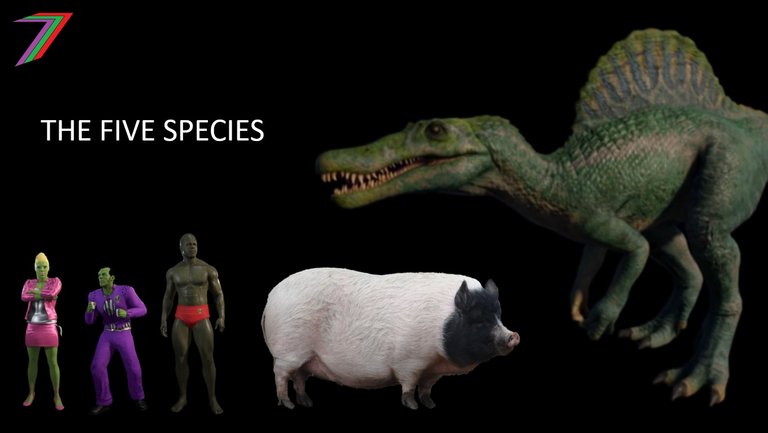
Our world consists of millions of different species. To simplify our discussion, we can divide them into human and non-human animals. In Sapien Loop there are five species types. These are the Sentray, the Linap, Sapiens, Sapiods, and Sapes. The Sentray were large, powerful predators, and the Sapes were herbivores. The Linap, Sapiens and Sapiods were humanoids. The Sapiods were a low-intelligent slave class. They were not covered in much detail in the book. The Sapiens avoided them because they were taught that they were a threat to the Sapiens and were fundamentally evil. The Sapiens have been humanised. They are almost completely like humans. If it were not for their colouring, they would look just like humans.
The intent was for the readers to relate to the Sapiens as if they were human. For most of ‘End of an Era’, Sapiens were treated as the dominant species, much like humans. The killing and consumption of Sapiens by what the reader believed were Sapiens would have created the impression of cannibalism. However, since the Linap are a different species from Sapiens, it is actually not cannibalism. The revealing of the Linap as another humanoid species was not intended to diminish the readers’ feelings towards the Sapiens. It does not diminish the outrage of them being eaten by the Linap. Even though humans kill and eat other species of animals all the time, which is not that much different than what the Linap were doing.
Despite being humanoid like the Sapiens, the Linap, because of their nature, are not humanised to the same extent as the Sapiens. The book would have created the perception that the Linap were bad and Sapiens were good.
In ‘Frozen in Time’, the story goes back a thousand years. This was before the Sapiens existed. At this time, the Linap were the only humanoid-like creatures that existed. This enabled the Linap to become as or almost as humanised as the Sapiens. The outright negative perception of the Linap should have been reduced. Ideally creating the impression that Linap and Sapiens are closer to equals. There are good and bad characters from both groups, and both species are flawed. I felt it was important to somewhat achieve this for the third book.
The Linap saw the Sapiods as a slave-class species who they could exploit at will. This is not so different from how humans treat some animals that are used as labour. We see this with mules, donkeys, and elephants. Humans even treat other humans as slave classes. According to the United Nations, as of 2021, around 50 million people lived as slaves. The most common forms of slavery are forced labour, forced marriage, and human trafficking.
Both the Linap and Sapiens considered the Sapes as a food source. Some of the Sapes lived in the regions. For the most part their lives were not too bad; they only suffered at slaughter. These Sapes were only used for restaurants. The majority of the Sapes lived outside the regions inside the large agriculture zones. The Sapiens were led to believe they lived a mostly content life like the ones in the regions. In ‘End of an Era’, it was revealed that they were actually kept in massive warehouse-like slaughterhouses where they were chained to enormous conveyor belts.
In the short story, ‘Hamlet to the Rescue’, the slaughterhouses are revisited. Several characters, which included two Sapes, went on a rescue mission to save the Sapes still trapped inside the slaughterhouses. This story also revealed something about the Sentray. They could have just killed all the trapped Sapes. Instead, they only killed what they needed. They let the rest go free to maintain the population.
The majority of humans eat animals. The majority of humans are very far from where the animals they eat are bred and eventually slaughtered. They are disconnected from their suffering. Either the meats of the animals they eat are packaged in a way that they are unrecognisable as the original animal, or they are presented as appealing meals in restaurants. This form of brainwashing separates people from the cruelty behind the food they eat. Many of the animal advocates discredit themselves by also supporting woke causes. This has unfortunately created the perception that veganism is another woke cause and thus has discouraged many people from moving away from industries involved in or supporting animal cruelty.
Still More to Come
In the context of family and society, this part of the series has covered most of the main areas of the books. There are still some areas of overlap with upcoming parts that relate to things such as infiltrating society at the grassroots level as well as false flag events.
The Sapien Loop Series

I am writing a trilogy of books titled Sapien Loop. The first in the series is Sapien Loop: End of an Era and the second is Sapien Loop: Frozen in Time. I published both of these books as ebooks on Amazon, and I have posted completed chapters to my @captainhive account. I anticipate publishing the third book in early 2027. I expect to title this book Sapien Loop: Worlds Collide. In 2025, I plan to write short stories about some of the characters and their adventures. I will post these to my @captainhive over the course of the year.
Brief Summary of Sapien Loop: End of an Era
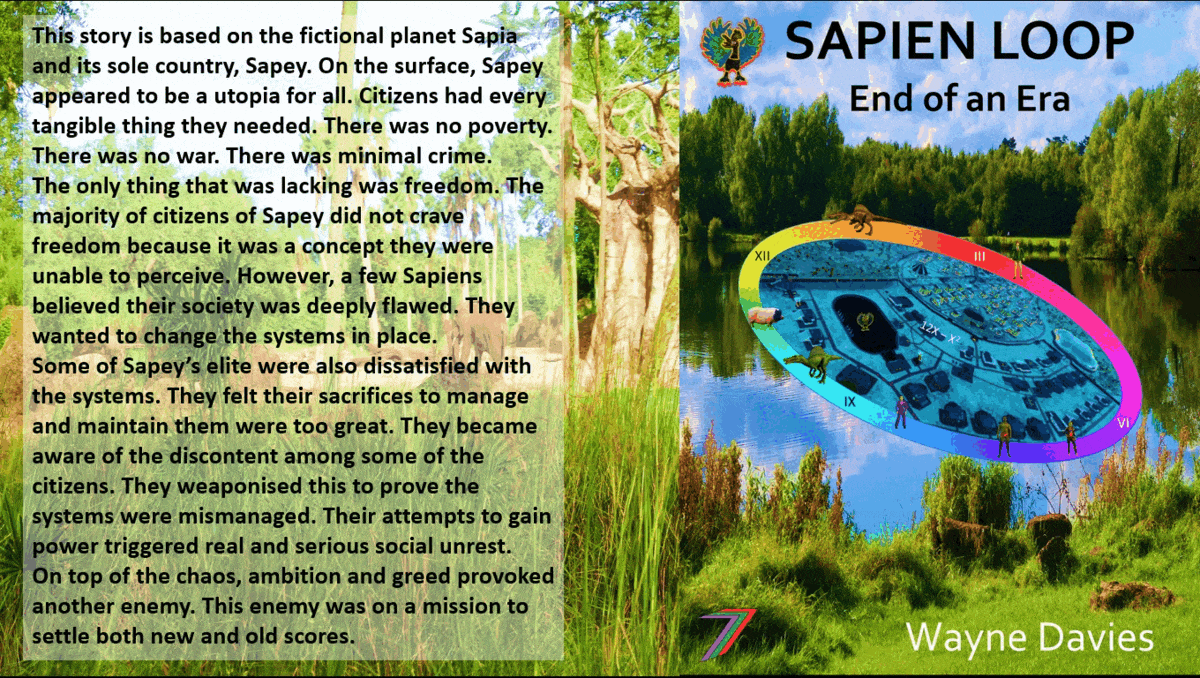
This story is based on the fictional planet Sapia and its sole country, Sapey. Sapey is portrayed as a form of utopia for all its citizens. No poverty. No war. Almost no crime. Opportunities for all.
This was enough for most citizens, but not all. In one of the small regions, some of the citizens had become discontent. They felt something important was missing in their lives. Their discontent did not go unnoticed. Some of the Sapey elite wanted to weaponise this discontent to gain more power. This created more chaos than they anticipated. This led to further widespread social unrest.
On top of the chaos, ambition and greed provoked another enemy. This enemy was on a mission to settle both new and old scores.
Brief Summary of Sapien Loop: Frozen in Time
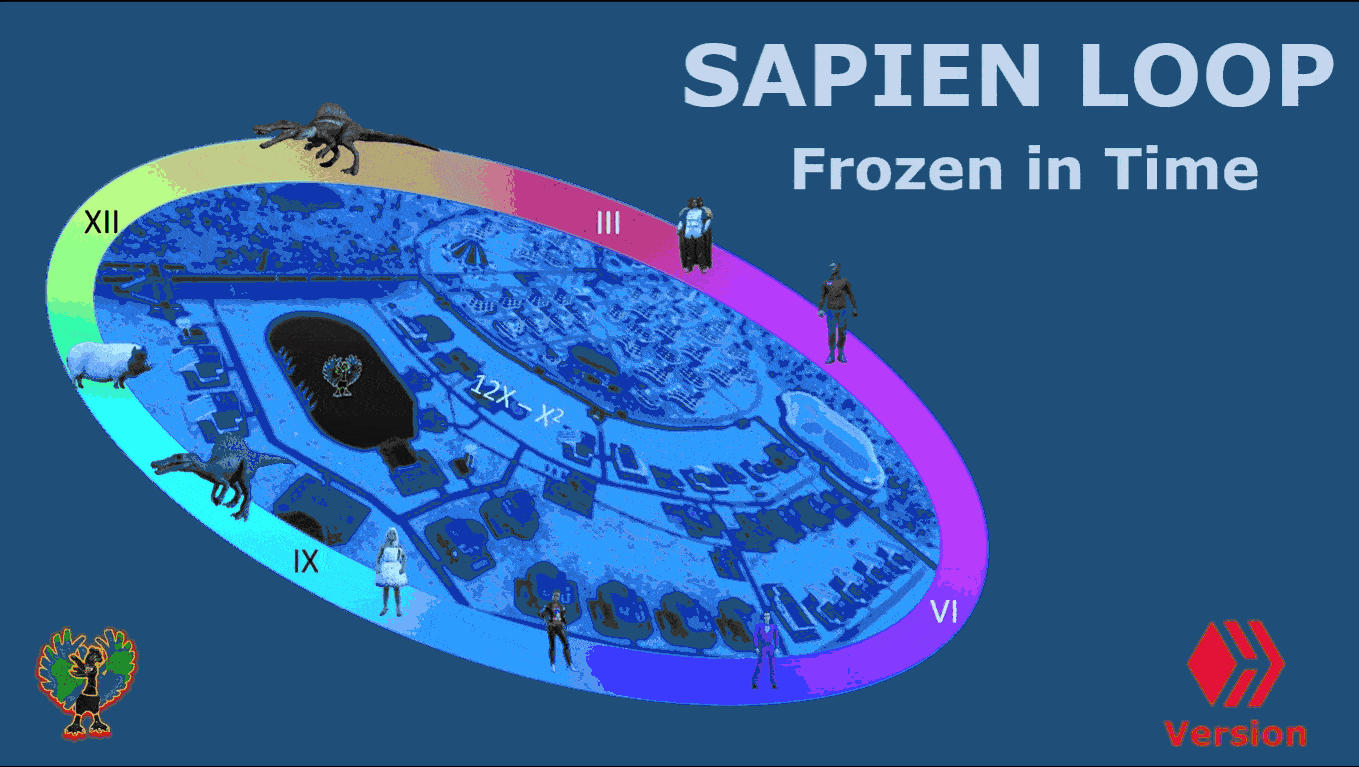
This story is based six years after the original story. The Downs Region is still suffering from a serious health crisis caused by the contaminated water. The main characters are desperately trying to a find a cure for the illness that has been caused by the water.
One of the main characters has discovered frozen humanoids in hidden chambers. It appears they have been frozen for a long time. These chambers connect to a vast network of tunnels. While exploring the tunnels, one of the frozen humanoids disappears. It appears he has been stolen.
The story takes a step back in time to tell the story of the frozen humanoids. How and why were they frozen? This part of the story also explains the fall of ancient Sapey and the birth of the Sapiens. Can those from the past be able to coexist with those from the present?
Hive: Future of Social Media
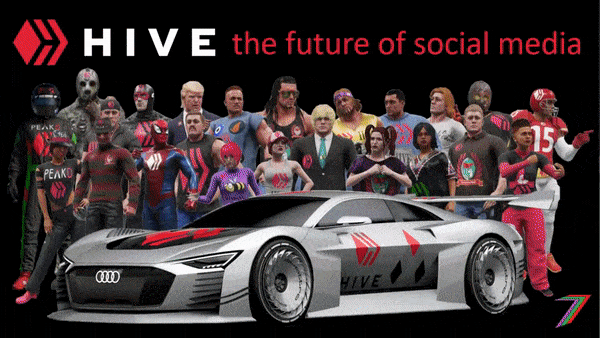
Spectrumecons on the Hive Blockchain

i guess this story is living prove that humans cannot be satisfied no matter what
https://x.com/jewellery_all/status/1923788425507090586
#hive